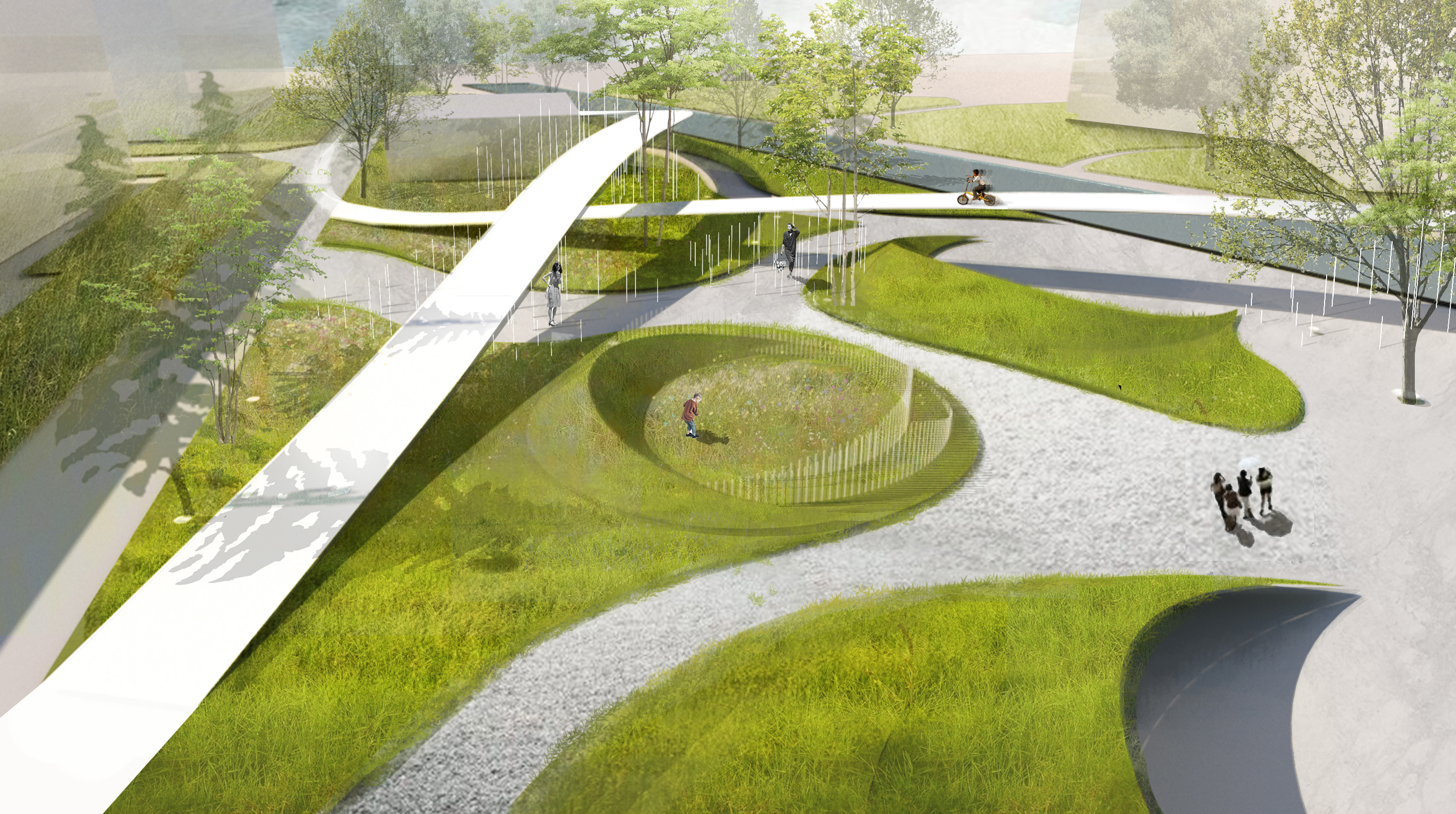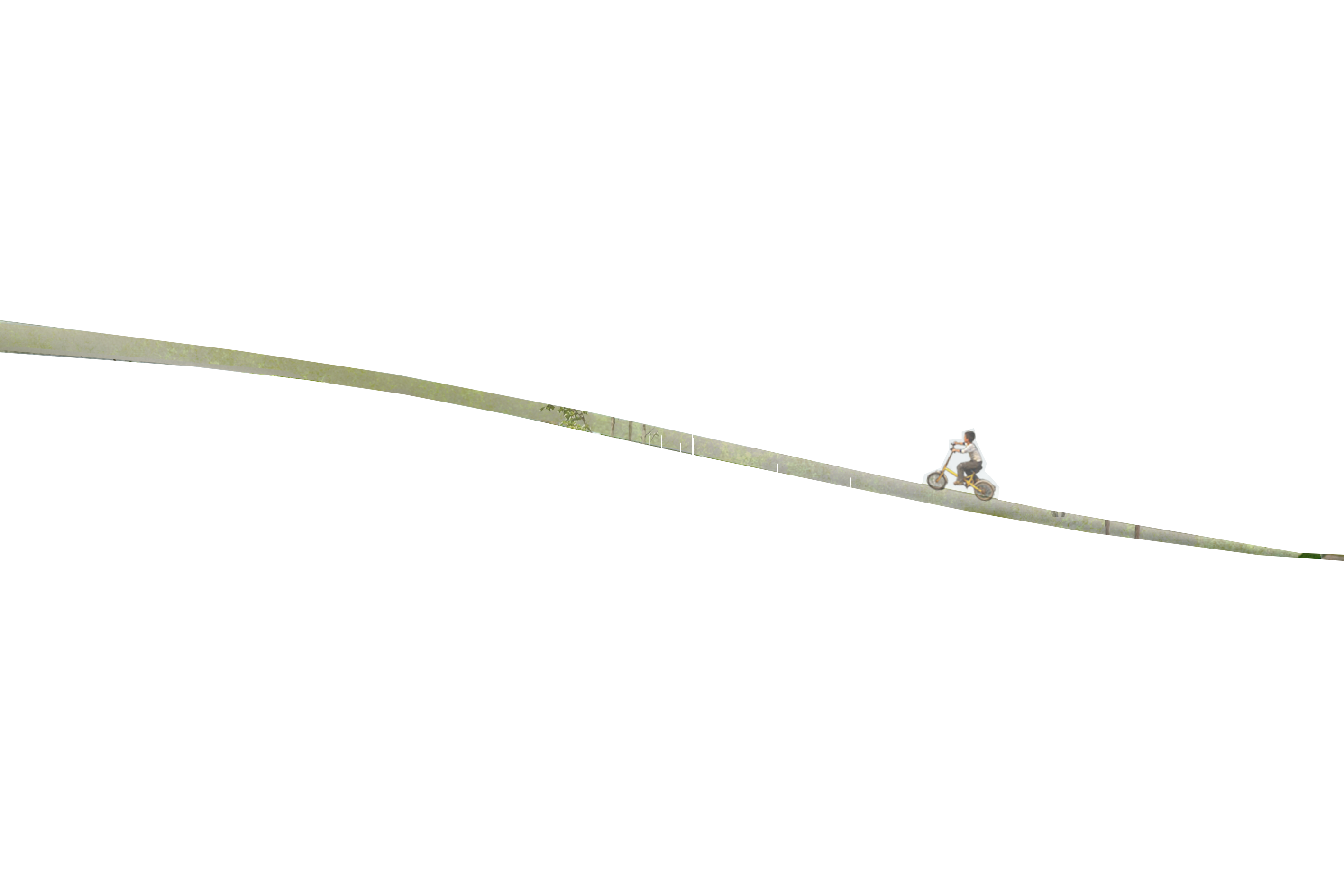

Starting from "speed", we design different venue experiences for fast-paced and slow-paced crowds due to different speeds. By restoring the natural terrain and inserting artificial objects, people can enrich the way of enjoying the site on the basis of retaining the original functional requirements and living habits, so that two groups of people can coexist here and share resources equally.
In the original site, the site boundary is clearly demarcated. The activity crowd is divided into two groups: one is the slow-paced family residents, and the other is the fast-paced young students. The former uses the slow life as the model to enjoy most of the interior space of the venue, while the latter only uses the peripheral passages to ride fast. pass through. The strong intervention of the site has separated the symbiotic relationship of the community. At the same time, due to the different ways of fast and slow life, fast-living groups only enjoy the functional resources that consume the main body, and lose sight, smell, listening and other ways of enjoying the scenery. Unequal consumption of resources.
The pattern generation is derived from the moving line. Using speed as a clue, analyze the activities of slow-paced people walking on the ground and fast-paced people cycling on bridges. According to height, line of sight, distance, behavior, etc., natural hills and linear hills generated parametrically are inserted to construct different spatial experiences of fast and slow.







